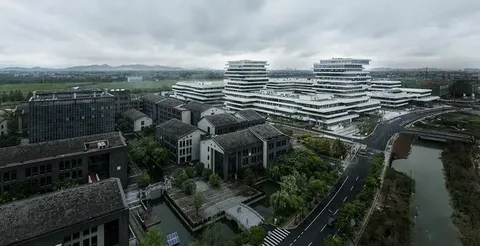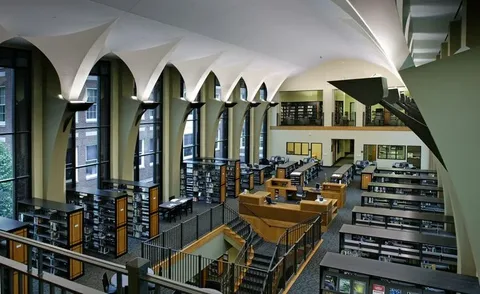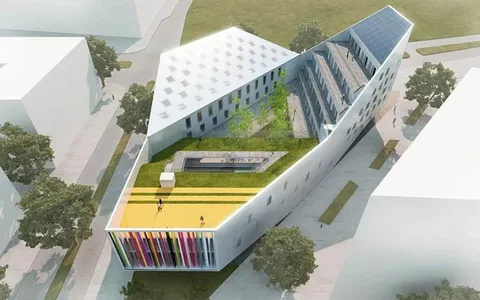Educational Cultural Complex: A Full Guide
Let’s get to the core question:
What exactly is an education culture complex? And why do you need to be concerned?
It’s much more than a fancy building or buzzword. It’s a place in which education, culture, and the community unite to create a learning space that’s vibrant, welcoming, inclusive, and fun.
If you’re an educator, student, or simply someone who’s interested in culture, knowing the significance of an educational culture complex could alter your perspective on learning spaces.
We’ll explore what an educational complex is, what it’s about, and how it affects communities across the globe.
What We’ll Cover:
- What exactly is an educational-cultural complex?
- The primary advantages of these complexes are for teachers, students and the entire community
- Experiments in the real world of educational and cultural complexes in real-time
- FAQs to address your most pressing questions
- How can I support or be involved in complexes of education and culture?
What Is an Educational Cultural Complex?

Keeping It Simple
An education and cultural complex is a place that combines learning and culture. Imagine a space where learning isn’t only a matter of classrooms but instead through galleries, museums, as well as theatres and community hubs.
It’s a multi-faceted learning environment that allows students to not only absorb facts from textbooks but also be able to experience culture directly, whether it’s through music, art, history, or any other form of expression.
Why It Matters
In a world where everything is interconnected as well, understanding and appreciating diverse cultural perspectives is more essential than ever. Cultural complexes in education deliver an opportunity for individuals to learn about and interact with the cultures of their own and other cultures in ways that traditional learning environments aren’t able to.
The Benefits of Educational Cultural Complexes
1. A Broader Learning Experience
One of the greatest advantages of an educational complex can be the development of the scope of education beyond the traditional classroom environment.
- Learning through hands-on Through interactive exhibits, workshops, or performances in the arts, students can learn in real-time.
- Culture immersion In lieu of reading about art or history, students can see it, feel it, and even interact with it.
2. Fostering Creativity and Innovation
Educational cultural complexes provide environments where creativity is encouraged. If students are exposed to diverse forms of expression, they are able to think outside the box.
- Inspiration from the arts Exposure to music, art, and theatre can ignite fresh ideas in students, allowing them to seek out creative solutions in different areas of their lives.
- Collaboration-based learning These types of spaces typically encourage groups of students or collaboration that allows students to collaborate in a variety of ways.
3. Building Cultural Awareness
In the current globalized world, being aware of culture is vital. Educational complexes that are culturally oriented enable students to be exposed to diverse cultural perspectives. This is becoming more and more valuable.
- Cultural sensitivity Understanding other cultures can help students to develop compassion as well as tolerance to people from every walk of life.
- World perspectives Learners learn to view all of the globe from a wider perspective. This could benefit in every aspect of life, from diplomatic to commercial.
4. Strengthening Community Connections
Cultural centers for educational purposes aren’t only intended for students. They’re often a hub for members of the communities in the area too. They are often the sites for events, exhibitions, and performances that bring people together, enhancing bonds within communities.
- Open-air events Gallery, museums and theatres within these complexes frequently host events for the public that bring people of different ages and different cultures together.
- Learning outside of the classroom It’s not only students who gain from these environments. Parents, teachers and members of the community are also able to participate in events and workshops.
Real-Life Examples of Educational Cultural Complexes

Example 1: The Smithsonian Institution, USA
The Smithsonian Institution in Washington, D.C., is among the perfect examples of an educational and cultural complex. With 19 galleries, museums, and a zoo, it has a broad range of cultural and educational experiences. Visitors and students alike are able to explore everything from ancient times to modern art in one location.
Example 2: The Louvre, France
Many people see the Louvre as an art museum; it’s actually an institution for education, culture, and research. The Louvre provides workshops and education programs along with guided walks that allow visitors to get involved in the world of the history of art and culture. It’s more than just viewing famous artworks but also understanding the significance of these works in their history.
Example 3: The Asian Civilizations Museum, Singapore
The Asian Civilizations Museum is an excellent illustration of how a museum can be focused on both the arts and culture. It offers engaging exhibits and workshops and educational programs that benefit people and students to explore the rich culture of Asia.
FAQs About Educational Cultural Complexes
1. Who is the person who can profit from the creation of an educational cultural complex?
Everyone. These spaces are intended to help students, teachers, as well as the community as a whole. No matter if you’re a primary student, university professor or simply someone who is seeking to know more about the world of culture, there’s something for everyone in an educational culture complex.
2. What is the difference between educational cultural complexes and traditional schools? differ from traditional Schools?
Traditional schools typically emphasize the study of textbooks as opposed to educational complexes that add a comprehensive learning experience which incorporates the arts, history, and the understanding of cultures. This is about engaging the subject in fresh and exciting ways.
3. Are Educational Cultural Complexes Expensive to Maintain?
It depends. Some complexes, such as the Smithsonian, are massive and require substantial funding other complexes are smaller and more focused on community. Many complexes get funding from government grants, donations or ticket sales.
4. Schools may be able to collaborate with educational cultural complexes?
Absolutely! Numerous schools collaborate with these facilities to provide students learning experiences that are hands-on. Schools are often required to plan field trips or collaborate on initiatives with local galleries, museums, or other cultural institutions.
5. Do educational cultural complexes only emphasize art?
No. While some complexes concentrate on the arts and historical aspects, others include sciences, technology, or multidisciplinary disciplines. The aim is to deliver the best education possible.
How to Support or Get Involved with Educational Cultural Complexes

Do you feel you’re inspired? Here are a few options you can get involved in your local educational cultural complex.
1. Attend Events and Workshops
The majority of educational and cultural centers offer workshops and events that are open to the public. If it’s an art show or a cultural event, they can be a fantastic way to get involved and gain a new perspective.
2. Volunteer or Intern
If you’d like to get more involved, a lot of complexes have volunteering and job opportunities. This is a fantastic opportunity to get experience, meet new people, and help shape the cultural and educational scene of your local community.
3. Donate or Fundraise
Cultural complexes for education often depend upon the generosity of donors as well as raising funds to sustain their activities. You could consider making a donation to a local institution or organizing a fundraiser to aid their efforts.
4. Work with schools or Community Groups
If you’re a teacher or a community leader, think about partnering with an educational culture complex. This could provide the students you teach or your community members with learning experiences that extend beyond the walls of your classroom.
Final Thoughts on Educational Cultural Complexes
An educational complex of culture isn’t merely a space but an enlightening space where learning as well as culture and community are brought together.
From expanding the horizons of students to stimulating creativity and developing the ability to appreciate culture, these structures are crucial in determining how we perceive what is happening around us.
If you’re a student who wants to discover new ways of learning, a teacher who wants to motivate your students, or a member of the community who is looking for a cultural connection, an educational culture complex has something for everyone.




